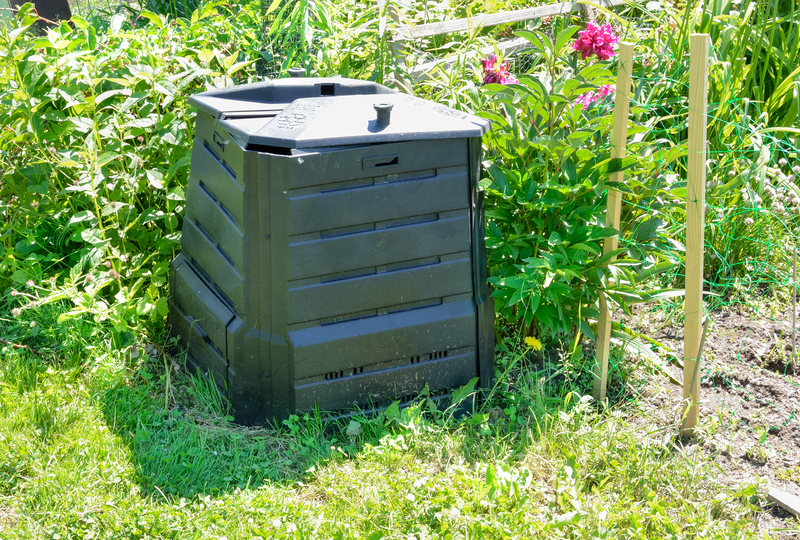Disposal Options for PPE Waste and How to Choose the Best One
In recent years, the management of Personal Protective Equipment (PPE) waste has become a pressing environmental and health concern. The global surge in the use of masks, gloves, gowns, and other protective gear due to pandemics and occupational safety standards has magnified this issue. This comprehensive guide explores the various disposal options for PPE waste, the environmental and regulatory factors to consider, and provides insights on choosing the best disposal method for your specific needs.
Understanding PPE Waste
PPE waste refers to used protective items designed to safeguard individuals from hazardous substances, pathogens, or chemical exposure. Common types include:
- Disposable masks (surgical, N95, FFP2/FFP3, etc.)
- Single-use gloves (latex, nitrile, vinyl)
- Protective gowns and suits
- Face shields and goggles
- Respirators and filters
- Disposable shoe and hair covers
The increase in PPE waste generation has significant implications for waste management systems, environmental sustainability, and public health. To ensure proper PPE waste disposal, it's important to be familiar with available disposal methods and their impacts.

Why Proper PPE Waste Disposal Matters
Inadequate disposal of PPE can lead to:
- Spread of infectious diseases through contaminated items
- Environmental pollution from non-biodegradable plastics and synthetic materials
- Harm to wildlife that ingest or become entangled in PPE
- Legal and compliance risks for businesses and healthcare facilities
Therefore, selecting the most appropriate PPE waste disposal option is crucial for safeguarding community health and the environment.
PPE Waste Disposal Options: An In-Depth Overview
1. Landfill Disposal
The most common disposal method for PPE waste, especially for households and non-hazardous facilities, is landfill disposal. Most disposable gloves, masks, and gowns are sent to municipal solid waste landfills.
- Advantages: Simple and low-cost. Widely available infrastructure.
- Disadvantages: PPE materials are often plastic-based and non-biodegradable, leading to long-term persistence and microplastic pollution. Not suitable for hazardous or infectious PPE waste.
Landfilling should only be considered for non-contaminated PPE waste and where no better alternatives exist. Proper segregation prior to landfill collection is essential.
2. Incineration
Incineration is the controlled burning of waste at high temperatures to destroy pathogens and reduce volume.
- Advantages: Highly effective at disinfecting infectious PPE waste and minimizing waste volume. Incinerators with pollution control technology can reduce emissions.
- Disadvantages: Costly to implement and operate. Can produce air pollutants if not properly managed. Not all regions have access to modern incineration facilities.
Incineration is preferred for healthcare and laboratory PPE waste known to be contaminated or posing a biohazard risk.
3. Autoclaving (Steam Sterilization)
Autoclaving uses pressurized steam at high temperatures to disinfect and sterilize waste, rendering it safe for landfilling or further processing.
- Advantages: Effective against a wide range of pathogens. Lower carbon emissions compared to incineration.
- Disadvantages: Not suitable for large amounts of mixed or bulky PPE waste. Some plastics may melt or deform. Requires segregation and specialized equipment.
Best for medical and laboratory PPE that is not heavily composed of synthetic materials or when environmental emissions are a top concern.
4. Chemical Disinfection
Chemical disinfection involves treating PPE waste with antimicrobial solutions to neutralize infectious agents.
- Advantages: Can be applied on-site with relatively simple equipment. Useful for spot disinfection or small volumes.
- Disadvantages: Not always effective for all pathogens or material types. Chemical residues may pose additional hazards or environmental concerns.
Often used as a supplementary step prior to other PPE disposal methods.
5. Microwave Treatment
Microwave treatment employs microwave energy to disinfect PPE waste through heat generation.
- Advantages: Rapid and efficient for certain types of medical PPE waste. Usually more energy efficient than incineration.
- Disadvantages: Limited scale and item compatibility. Not effective for all PPE types, especially thick or layered materials.
Suitable for small to medium-scale healthcare facilities with consistent PPE waste streams.
6. Recycling and Reprocessing
With the rise in sustainable PPE waste management, recycling PPE is receiving increased attention. Specialized programs have been developed to collect and process certain types of PPE waste, turning them into raw materials for new products.
- Advantages: Reduces environmental impact and conserves resources. Can be cost-effective if infrastructure exists.
- Disadvantages: Only certain types of PPE (e.g., some masks and gloves) are recyclable. Must be free from biological contamination. Requires thorough segregation and cleaning prior to recycling.
Check with local waste management authorities or recycling programs to see what PPE can be recycled in your area.
7. On-site Sewage Disposal (For Some PPE Waste)
In specific scenarios, PPE items such as paper-based masks (without plastic layers) may be disposed of via on-site sewage systems. However, this is seldom recommended due to risks of clogging and environmental release of microplastics.
- Advantages: Immediate disposal option for very limited items.
- Disadvantages: Risk to plumbing and sewage treatment operations. Generally not advisable for plastic-based PPE waste.
8. Pyrolysis and Advanced Thermal Treatments
Pyrolysis and similar advanced methods break down PPE waste at high temperatures in the absence of oxygen, converting plastics into oil, gas, and char.
- Advantages: Generates energy and recovers valuable resources. Reduces landfill burden.
- Disadvantages: Technologically complex and expensive. Limited global adoption.
How to Choose the Best PPE Waste Disposal Option
There's no one-size-fits-all solution when dealing with PPE waste disposal. Here are critical factors to consider when selecting the right disposal method:
1. Type and Contamination Level of PPE Waste
- If PPE waste is biologically contaminated (e.g., COVID-19, hospital waste), prioritize incineration, autoclaving, or chemical disinfection.
- Non-contaminated disposable PPE (e.g., public mask use) may go to landfill or, where feasible, recycling.
2. Local Regulations and Compliance
- Follow all national and local waste management laws. Many countries have strict guidelines for handling medical and hazardous waste.
- Check for PPE-specific disposal mandates to avoid fines or legal complications.
3. Environmental Impact
- Minimize reliance on landfilling due to long-term plastic pollution risks.
- Opt for sustainable PPE disposal options--such as recycling or steam treatment--when available and safe.
4. Infrastructure and Cost
- Consider what facilities and technology are accessible in your area.
- Incineration and pyrolysis may not be viable in rural or resource-poor locations.
- Small businesses and households should investigate municipal programs or shared solutions.
5. Safety and Public Health
- Choose disposal options for PPE waste that thoroughly neutralize infectious agents, especially in healthcare and industrial settings.
- Keep PPE waste securely bagged and labeled before disposal to protect sanitation workers and prevent accidental exposure.
6. Potential for Reuse and Recycling
- Identify PPE items that can be safely recycled or refurbished after sterilization.
- Participate in take-back or donation programs if they exist for unused or surplus PPE.
Best Practices for Safe and Sustainable PPE Waste Disposal
- Segregate PPE waste by type and risk level (biologically contaminated vs. non-contaminated).
- Bag PPE waste securely in leak-proof, puncture-resistant containers.
- Label waste clearly for proper identification by waste handlers.
- Do not mix PPE waste with regular recyclables or compostables unless directed by authorities.
- For businesses: partner with certified PPE waste management companies or medical waste service providers.
- For households: follow local public health guidelines for mask, glove, and gown disposal.
- Educate staff and users about correct disposal protocols and environmental impacts of incorrect PPE disposal.
Community and Corporate Responsibility
The collective responsibility of individuals, organizations, and governments is essential for effective PPE waste management. Implement PPE waste reduction strategies, such as:
- Choosing reusable PPE when appropriate and safe
- Educating users on proper usage to extend product life
- Supporting or initiating research into biodegradable PPE alternatives
- Advocating for extended producer responsibility (EPR) programs for PPE manufacturers
Innovations and Future Directions in PPE Waste Disposal
Researchers and entrepreneurs continue to develop innovative PPE disposal solutions:
- Biodegradable PPE products from eco-friendly materials (e.g., plant-based polymers, cellulose)
- widespread PPE recycling programs (such as the TerraCycle mask recycling initiative)
- Mobile, small-scale incinerators for remote or temporary sites
- Advanced sterilization technologies (e.g., plasma, ozone treatment)
Widespread adoption of these advancements in PPE waste disposal depends on regulatory support, technological feasibility, and consumer awareness.

Conclusion
The exponential growth of single-use PPE highlights the urgency of investing in safe, efficient, and sustainable PPE waste disposal options.
- Landfilling remains common but is unsustainable for the long term.
- Incineration and autoclaving are vital for infectious or hazardous PPE.
- Recycling and reprocessing are on the rise as environmentally preferred methods for certain PPE types.
Frequently Asked Questions (FAQ) About PPE Waste Disposal
- Q: Can all PPE waste be recycled?
A: No, only some types of PPE can be recycled. Most must be free from biological contamination and sorted appropriately. - Q: Is it safe to dispose of masks and gloves with household trash?
A: Yes, if the PPE is not known to be contaminated with infectious agents. Follow local waste guidelines for disposal. - Q: What should businesses do with large volumes of used PPE?
A: Partner with licensed waste contractors specialized in medical or hazardous waste disposal to ensure compliance and safety. - Q: Are there eco-friendly PPE products on the market?
A: Yes, there is a growing range of biodegradable, compostable, or recyclable PPE made from natural materials.
For further guidance, consult your local environmental agency, public health office, or professional waste management provider. Choosing the right PPE waste disposal option is a small but powerful step towards environmental stewardship and public safety.
